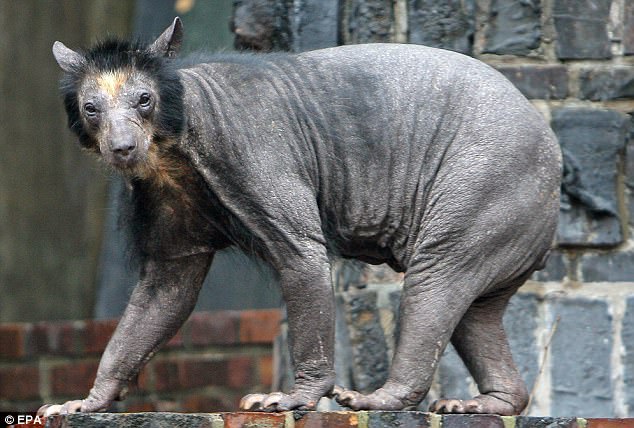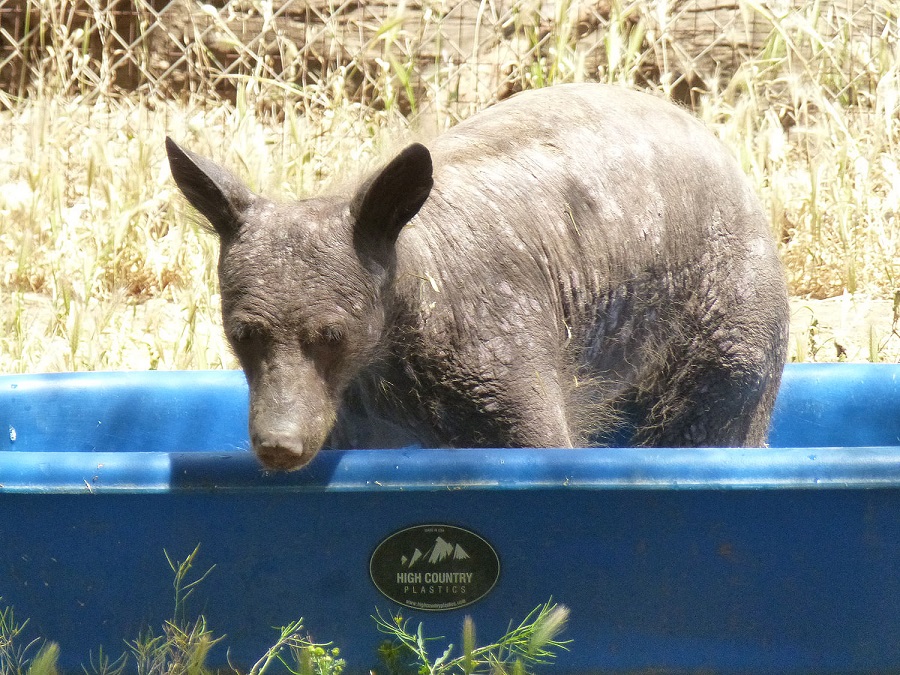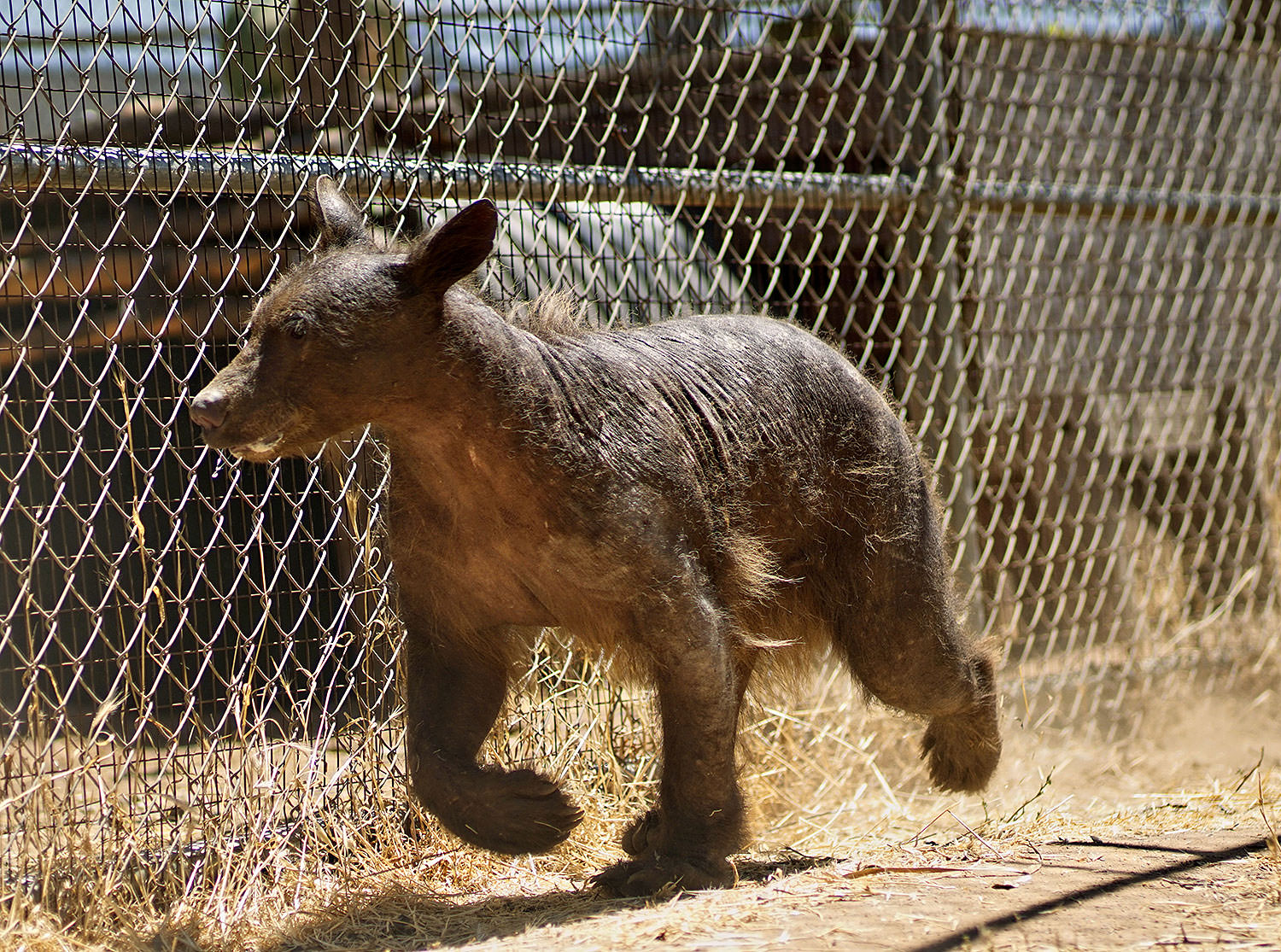Losing hair isn’t just a problem for humans. This condition can affect animals as well, whether it is caused by disease or old age. The loss of hair from the head or body is technically known as alopecia. Various factors may contribute to it, such as seasonality, biological dysfunctions, aging, abnormal vitamin and mineral levels, genetic mutations, diseases, or parasite infestations. Many animals have been bred to have no hair, including dogs, cats, rats, and guinea pigs.
A German zoo observed Dolores the Bear losing her hair suddenly in 2009. She is among several female bears affected by sudden baldness. Though the animals do not appear to suffer from any other illness, some experts believe this results from a genetic defect. Originating from South America, bears have fluffy dark brown fur and would now be growing a thicker fur coat to keep warm. However, they have developed nasty rashes and inflammations on their skin.
Several other hairless black bears suffer from mange in the Pennsylvania woods, a skin condition that is more commonly associated with dogs. Scientists are unsure what is causing the black-bear mange outbreak in the Keystone State, but officials say that the outbreak is rising. According to Mark Ternent, a wildlife biologist and the Pennsylvania Game Commission’s black-bear expert, black-bear mange is becoming a regional issue within the Mid-Atlantic region, with cases popping up in New York, Virginia, Maryland, and Virginia.








